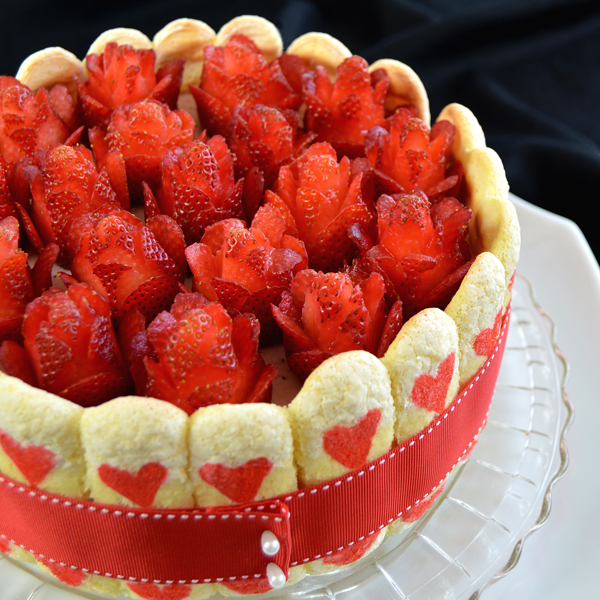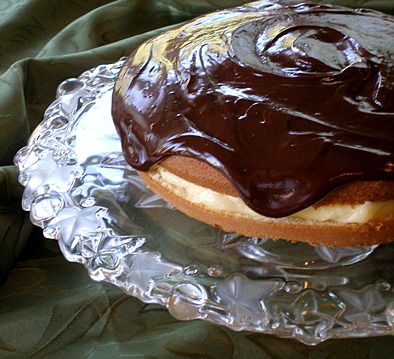Rosewater Meringues with Roasted Strawberries
8877 views| 2 comments
Copyright © 2000 Sarah Phillips CraftyBaking.com All rights reserved.
 Sponge Cake (not to be confused with a Butter Sponge Cake or Genoise) is sometimes used to refer to the whole category of foam or unshortened cakes, and is also a type of cake in itself. A Sponge cake is wonderfully versatile, and can be found with a multitude of recipes. It varies by two types: American and European, but the distinction between the two has been blurred. The texture and flavor of sponge cakes is so delightful and subtly flavorful that they are usually eaten without or without adornment. Because these cakes are based on precious and delicate air bubbles, these batters require precise techniques when making, special pan preparation, and must be placed in a well-preheated oven right away, so none of the air cells are broken down.
Sponge Cake (not to be confused with a Butter Sponge Cake or Genoise) is sometimes used to refer to the whole category of foam or unshortened cakes, and is also a type of cake in itself. A Sponge cake is wonderfully versatile, and can be found with a multitude of recipes. It varies by two types: American and European, but the distinction between the two has been blurred. The texture and flavor of sponge cakes is so delightful and subtly flavorful that they are usually eaten without or without adornment. Because these cakes are based on precious and delicate air bubbles, these batters require precise techniques when making, special pan preparation, and must be placed in a well-preheated oven right away, so none of the air cells are broken down.

Two Types of Sponge Cakes: American and European, but they are found the world over
AMERICAN SPONGE CAKE
The American Sponge cake ingredients are typically sugar and flour, being cake flour, not self-rising, yielding a fine textured recipe. Because cake flour is usually bleached white, the cake easily takes on the color of the egg yolks or other add-ins. Superfine sugar, rather than regular table sugar is preferred, because it dissolves faster, yielding a finer texture. (It can be easily made by placing granulated sugar in a food processor for a few seconds, but the process will scratch your work bowl).
 Typical of some sponge cakes, the American version has no or little melted butter and has more eggs than other sponge cake types. The yolks and whites are often beaten separately; the beaten whites holding more air than beaten yolks, providing a boost of air to the cake's leavening, resulting in a spongy texture. Sometimes heated milk is added to the recipe and it is called a "hot milk sponge recipe." We use this type of sponge cake when making our Boston Cream Pie recipe.
Typical of some sponge cakes, the American version has no or little melted butter and has more eggs than other sponge cake types. The yolks and whites are often beaten separately; the beaten whites holding more air than beaten yolks, providing a boost of air to the cake's leavening, resulting in a spongy texture. Sometimes heated milk is added to the recipe and it is called a "hot milk sponge recipe." We use this type of sponge cake when making our Boston Cream Pie recipe.
EUROPEAN SPONGE CAKES
Among the more popular Sponge cake types are the European styled Italian Genoise and French Biscuit (Dacquoise, Roulades, etc), which more often than not are moistened with syrups because of their tendency to be naturally drier than American butter cakes. The right amount of syrup - usually brushed on lightly - helps result in soft and tender crumb; too little can render the cakes dry or tasteless, while too much produces soggy. Hardcore European versions have liqueur as part of their syrupy additives, resulting in notably enhanced flavors. In both the Genoise and Biscuit, cornstarch replaces some of the flour, causing the cake to be tighter. Superfine sugar is recommended because is dissolves faster than regular granulated.
8877 views| 2 comments
5927 views| 0 comments
10058 views| 5 comments